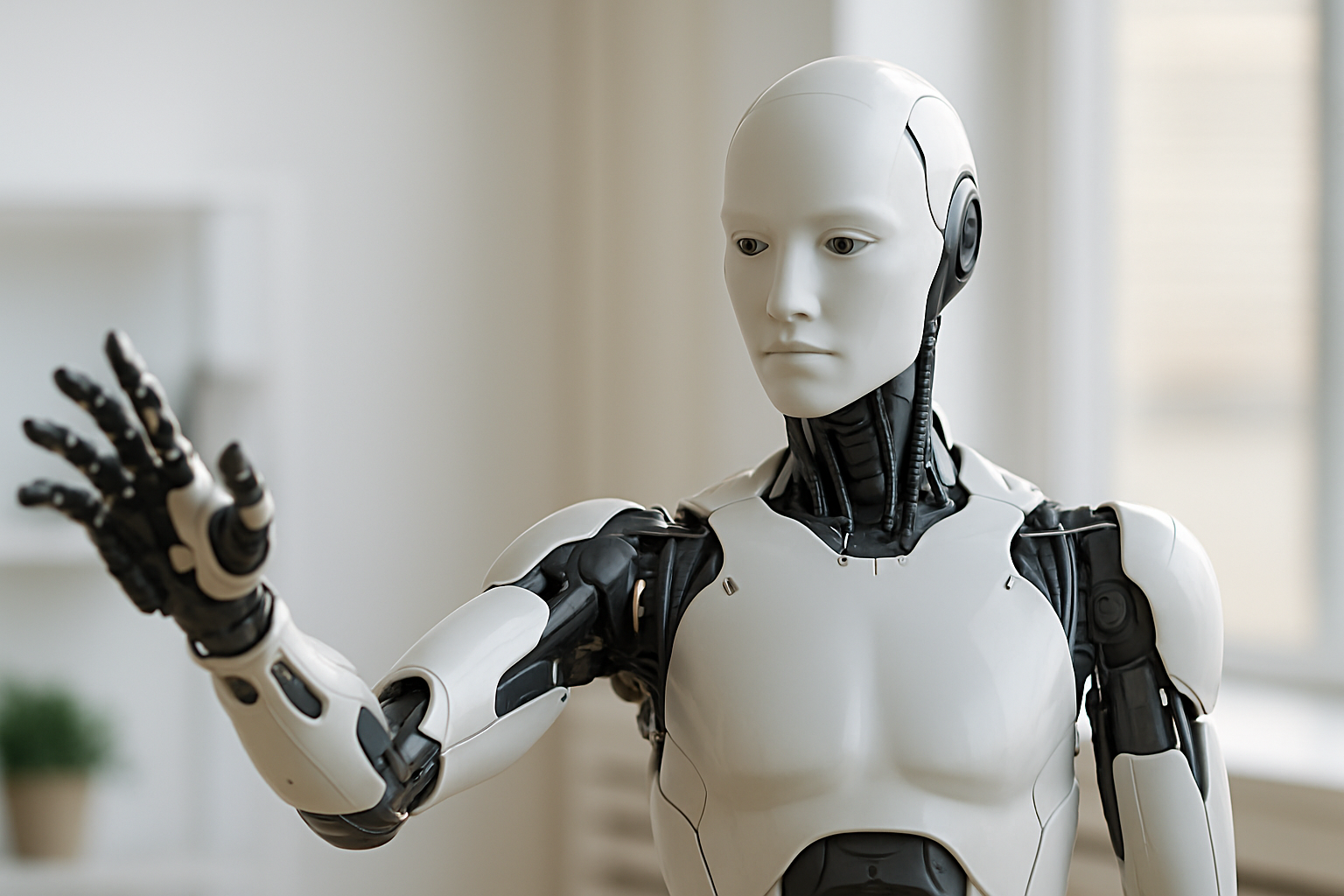In the rapidly growing world of robotics, one name is beginning to stand out not for building robot arms or fancy legs, but for creating the digital brain behind them. That name is OpenMind, a Silicon Valley based startup developing OM1, a platform that’s aiming to become the Android of humanoid robot software.
While many companies are investing heavily in hardware, OpenMind is focused on what truly gives humanoid robots intelligence: the software. And with OM1, they’re hoping to build a universal operating system that any humanoid robot can run no matter the manufacturer.
Why Humanoid Robot Software Is the Missing Link
Today’s humanoid robots are powerful, but fragmented. Each company builds its own system from scratch, making innovation slow and integration costly. This is where humanoid robot software like OM1 can change the game.
OpenMind is creating a modular, hardware agnostic platform that acts as the brain for humanoid robots. Their system is, Open source allowing global collaboration and transparency. AI powered capable of adapting to environments in real time. Developer friendly built with popular frameworks like Python and ROS2.
Plug and play designed to work with all types of hardware. By providing a standardized brain, OM1 could allow companies to focus on building better robot bodies, while leaving intelligence to OpenMind’s software.
Revo Dynamics Adopts OM1 with Impressive Results
A real world example of OM1’s potential can be seen in RevoDynamics, a startup building warehouse humanoid robots. Initially, their systems faced serious challenges syncing various hardware parts robot arms, cameras, and wheels due to incompatible software. After switching to OM1, everything changed.
Integration time dropped by 40%, The team launched their product 2 months early, Their robots began learning faster and interacting smarter. RevoDynamics CTO shared, OM1 gave us the flexibility and intelligence we needed. It felt like using Android after years of writing code for different phone brands.
This story shows that humanoid robot software can solve major engineering challenges, reduce time to market, and lower costs significantly.
Why OM1 Matters Now
Robotics experts are already seeing the signs of a major shift. According to one well known AI researcher, Software is the true bottleneck in robotics. Hardware is advancing fast, but we lack a unified brain to make use of it.
OM1 offers that solution. Much like Android unified smartphone development, OM1 is trying to unify humanoid robotics. This will open doors for startups, universities, and even hobbyists to enter the space without reinventing the wheel.
A Developer’s Journey: From Beginner to Roboticist
Sarah Lin, a self taught programmer, had never touched a robot before. She downloaded OM1 to experiment on a 3D printed robotic arm she found online. With just a few lines of Python, she was able to make it, Recognize voice commands, Pick up objects, Avoid obstacles.
OM1 made me feel like I could build something meaningful even with no robotics background, she said. Today, Sarah contributes to OM1’s voice module used in elderly care bots. Her journey proves that humanoid robot software like OM1 is not just for big companies it’s for creators everywhere.
What Makes OM1 Technically Powerful?
OM1 is built for real world deployment. Key features include, Vision and motion APIs making it easier to add object detection or walking capabilities. AI learning modules allowing robots to improve based on experience. Edge computing for quick local decisions, even without internet.
Cloud synchronization to keep learning from a global database of robot interactions. By combining flexibility and intelligence, OM1 bridges the gap between advanced robotics and everyday usability.
Why the Market Needs Standardized Humanoid Robot Software
The humanoid robot market is expected to cross $20 billion within the next few years. Industries like, Healthcare (nursing and patient care), Logistics (warehouse management), Hospitality (hotel assistants), Education (robotic tutors), are all investing in humanoid robotics.
But without a unified software layer, each company must build everything from scratch. OM1 could fix this, becoming the go to humanoid robot software platform across sectors.
Challenges Ahead for OM1
Even a promising platform like OM1 will face hurdles, Convincing hardware makers to switch to OM1. Ensuring compatibility across dozens of robot designs, Managing updates, bugs, and user security, Preventing AI bias in learning systems.
OpenMind’s team says they’re taking a security and ethics first approach regular audits, encrypted updates, and transparent model training.
Could OM1 Become the Android of Robotics?
Just like Android revolutionized smartphones, OM1 has the potential to do the same for robots. It’s, Open, Scalable, Flexible, Easy to adopt. If OpenMind succeeds, we could soon see a world where robots whether in homes, hospitals, or factories all run on a common humanoid robot software. That would mean faster innovation, lower costs, and more intelligent machines everywhere.
OpenMind is not just building software. It’s building the brain that could power millions of humanoid robots worldwide. OM1’s open source, AI powered, and flexible design could make it the future standard of the robotics world.
If we want robots that are smarter, safer, and more helpful then the solution isn’t more hardware. It’s better humanoid robot software. And OpenMind might just be leading the way.

